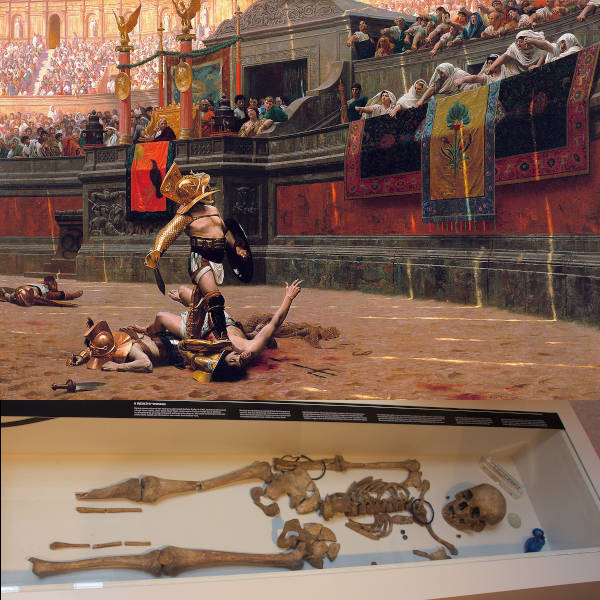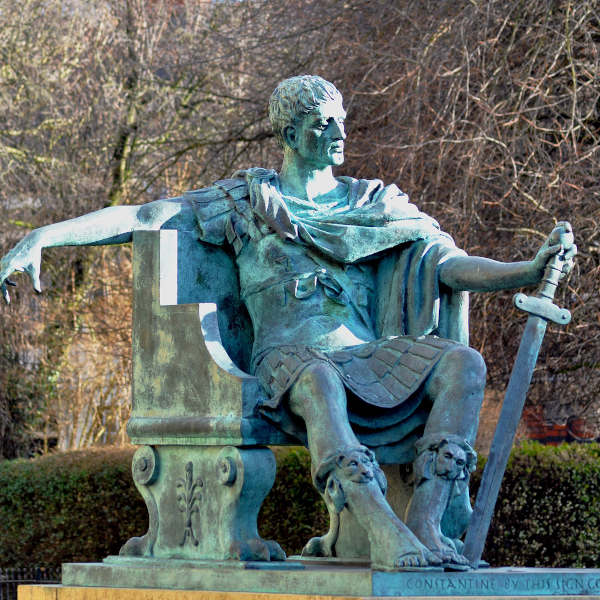DNA spotlight
Roman Gladiators from York
The Roman conquest of Britain began in 43 AD but resistance in the north was fierce. Roman General Quintus Petillius Cerialis led the 9th Legion into the north and founded Eboracum in 71 AD (which became York) Originally Eboracum was intended to be a military fortress aligned along the river Ouse measuring about 50 acres in size. This wooden camp was upgraded to stone in 108 AD and garrisoned by the 6th Legion. The famous Emperor Hadrian reportedly visited Eboracum in 122 AD in order to plan his great walled frontier, which would be named after him. Emperor Septimus Severus visited in 208 AD and made it his private base while campaigning against Scotland, and he became the first of three Roman Emperors who would die in Eboracum. In 237, the town became a colonia, the highest legal status any Roman city could attain as Eboracum was the largest town in the north and the capital of Britannia Inferior. This is exactly the time period from when these 7 gladiators hailed.

Detailed analysis of these gladiators from York revealed some fascinating results. The bones showed various degrees of wear and tear as one might expect from the dangerous sport: 6DRIF-18 revealed a spinal fracture of the first vertibrae, 6DRIF-21, 6DRIF-3, and 3DRIF-16 meanwhile have fractured forearms, ankles and wrists. 6DRIF-22 has a skull injury as well as a stab to the neck - his extra vertebrae did not seem to assist with his fate. 6DRIF-23 meanwhile had 4 cuts to his jaw and was fully decapitated - clearly not the best fate to have. Last but not least 3DRIF-26 is fascinating indeed - he had a left shoulder injury, fractured ribs, damage wrists - and from a genetic standpoint is a deviation from the rest. His background compared to ancient samples from the time period matches very close to Ptolemaic Egyptians or the Near East.

Constantine came to Eboracum with his father, the emperor Constantius in 305 AD. After the emperor died the following July in York, the soldiers proclaimed Constantine to be their leader. Within 20 years, Emperor Constantine united the whole of the Roman Empire and would be known as Constantine the Great who did not just restore peace to the Roman Empire, but also relocated the Roman capital to the newly built Constantinople. The eventual decline of Roman Britain in the early 400s led to significant socioeconomic changes in Britain. The effect of Constantine's religious policy allowed development of Christianity in Roman Britain, which led to the first bishop of York to be named. Today there are numerous visible remains in York from this time period including a Roman Basilica, walls, a tower in the city walls and Roman baths.
Sample: Nordic-Celtic Gladiator York
- Sample ID: 6DRIF-18
- Year: 250 AD
- Sex: Male
- Location: 53.957,-1.092
Sample: Celtic Gladiator York
- Sample ID: 6DRIF-21
- Year: 250 AD
- Sex: Male
- Location: 53.957,-1.092
Sample: Celtic Briton Gladiator York
- Sample ID: 6DRIF-22
- Year: 250 AD
- Sex: Male
- Location: 53.957,-1.092
Sample: Celtic Briton Gladiator York
- Sample ID: 6DRIF-23
- Year: 250 AD
- Sex: Male
- Location: 53.957,-1.092
Sample: Celtic Briton Gladiator York
- Sample ID: 6DRIF-3
- Year: 250 AD
- Sex: Male
- Location: 53.957,-1.092
Sample: Celtic Briton Gladiator York
- Sample ID: 3DRIF-16
- Year: 250 AD
- Sex: Male
- Location: 53.957,-1.092
Sample: Egyptian/Near East Gladiator York
- Sample ID: 3DRIF-26
- Year: 250 AD
- Sex: Male
- Location: 53.957,-1.092



